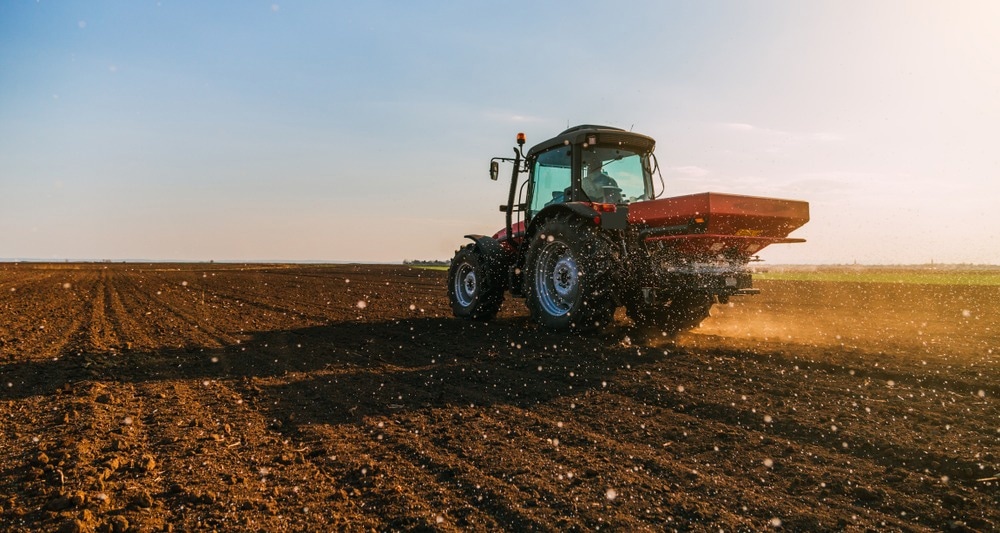Feeding the world’s population is a key goal of sustainability and a collective effort to ensure the planet remains habitable for future generations. But as rising populations create rising demands for food and deteriorating environmental conditions reduce crop yields, agriculture is under immense pressure to deliver. The sector is now turning to photonics to harvest productivity gains that will enable it to keep providing food in years to come.

Image Credit: oticki/Shutterstock.com
Optical and photonic devices are employed in the agriculture industry to avoid harming nearby wild animal populations with heavy machinery, collect key metric information for big data analysis, and detect diseases in crops early on. This enables farmers to move toward more sustainable, efficient, and less toxic methods for producing food.
The introduction of photonics to agriculture comes from a collective effort to end hunger worldwide. The United Nations (UN) adopted the Sustainable Development Goals (SDGs) in 2015, one of which is Global Zero Hunger. To achieve this alongside the other SDGs, agriculture has to turn to technological advances to enhance yields.
At the same time as increasing demand for food sources, agriculture must also find ways to reduce its environmental impacts. Agriculture accounts for over two-thirds of the world’s total water usage, contributes almost a quarter of total greenhouse gas emissions and causes environmental damage at massive scales through land use.
Failing to address the environmental impact of agriculture will have severe consequences, not least of which is the degradation of environmental conditions that allow us to grow sufficient food in the first place.
Introducing Photonics to Agriculture
One significant way photonics has helped farmers deliver nutritious, affordable food is by introducing spectrometry devices and hyperspectral cameras, which enable farmers to detect wheat crops’ protein levels, for example, or to spot fruit and vegetable contaminants.
Optical sensors such as these are mounted onboard unmanned drones, survey aircraft, and even at the edges of the atmosphere and beyond on satellites. They can map large land areas from a long distance, and the optical data this mapping produces is used to detect and determine crop health and growth changes.
Photonics is also used to gather evidence for agriculture’s impact on the nearby environment. This is valuable data being used to minimize that impact and test the effectiveness of measures taken to minimize it.
As well as monitoring the health and growth of crops and their ecological neighbors, photonics is also being applied to tackle food waste.
Food waste is a growing issue. One-third of all food produced worldwide is wasted at some point from harvest to consumption. Photonics devices such as hyperspectral cameras help farmers determine how ripe fruits and vegetables are before they are picked, resulting in less wastage at harvest.
Photonics-based imaging and labeling systems are also in place to deliver shorter lead times for food processing and distribution. This means that food can reach the consumer much sooner after it is harvested, resulting in less food wasted because it went bad before it could be used.
Fluorescence spectroscopy devices contribute to consumer confidence by measuring levels of amino acids, allergens, vitamins, and other food components in regulatory settings. This means that food is less likely to be unusable at purchase, further eliminating food waste.
How is Photonics Applied in Agriculture?
Large agricultural equipment manufacturers produce automation systems and heavy machinery with integrated optical sensors to improve productivity.
One example is the photonic devices deployed on heavy field machines that help to protect animals in the field.
The Sendosafe Sensor, developed by Innsbruck, Austria-based company Optronia, is one such sensor system. It combines optical sensors and computer vision with artificial intelligence (AI) to detect wildlife automatically and raise the machine’s cutting gear.
Another growing application area for agricultural photonics is vertical farming. Vertical farming places multiple layers of crop growing space on top of each other in a building or other infrastructure.
The Italy-based Agricola Moderna employs photonic sensors to automatically control vertical farms. They provide data on the farms’ ambient environments and the presence of diseases, and this data is processed to optimize the farm’s processes for maximum yields.
Hyperspectral imaging techniques are combined with photonics sensors to back up crop management activities with hard data. Hyperspectral imaging can characterize nitrogen, phosphorus, flavonoid, and potassium levels in a given agricultural area. This data helps farmers plant and harvest in the best location and times for yield.
As farmers continue to invest in new technology – and as innovative solutions such as vertical farms are developed – yields should increase, but not at the cost of the earth.
References and Further Reading
Case Study: Agricola Moderna – hyperspectral imaging enters vertical farming. (2021) [Online] Specim. Available at: https://www.specim.fi/case-study-agricola-moderna-hyperspectral-imaging-enters-vertical-farming/ (Accessed on 22 July 2022).
Goal 2: Zero Hunger. [Online] UN. Available at: https://www.un.org/sustainabledevelopment/hunger/ (Accessed on 22 July 2022).
Vergyris, P. (2022). Photonics applications emerge for agriculture. [Online] Laser Focus World. Available at: https://www.laserfocusworld.com/detectors-imaging/article/14276564/photonics-applications-emerge-for-agriculture (Accessed on 22 July 2022).
Work Group 6: Agriculture & Food. [Online] Photonics 21. Available at: https://www.photonics21.org/about-us/structure/workgroups/workgroup-6-agriculture-and-food.php (Accessed on 22 July 2022).
Disclaimer: The views expressed here are those of the author expressed in their private capacity and do not necessarily represent the views of AZoM.com Limited T/A AZoNetwork the owner and operator of this website. This disclaimer forms part of the Terms and conditions of use of this website.